Advancement in Heat Treatment and Surface Modification for Metals
A special issue of Coatings (ISSN 2079-6412). This special issue belongs to the section "Corrosion, Wear and Erosion".
Deadline for manuscript submissions: 31 May 2024 | Viewed by 6081
Special Issue Editors
Interests: metals; chemical heat treatment; heat treatment; surface modification; properties
Special Issues, Collections and Topics in MDPI journals
Special Issue Information
Dear Colleagues,
Surface modification is necessary to meet the required specifications for the majority of metal components. Chemical heat treatment of metals is a kind of surface modification technology for modifying both the chemical composition and microstructure of the surface layer, and thus makes the properties of the surface layer different from those of the matrix to meet the different requirements in different zones of the metal components, such as wear, oxidation or corrosion resistance, toughness, etc.
This Special Issue on “Advancement in Chemical Heat Treatment for Metals” in Coatings invites front-line researchers to submit original research and review articles on various aspects in the field of the novel chemical heat treatment of metals. The advancement of chemical heat treatment is to provide better combined properties or higher efficiency.
It is our great honor to invite you to submit a manuscript for this Special Issue that provides an excellent opportunity for those who are working within these fields, paving the way for the further advancements in chemical heat treatment for metals.
Dr. Jing Hu
Dr. Xulong An
Guest Editors
Manuscript Submission Information
Manuscripts should be submitted online at www.mdpi.com by registering and logging in to this website. Once you are registered, click here to go to the submission form. Manuscripts can be submitted until the deadline. All submissions that pass pre-check are peer-reviewed. Accepted papers will be published continuously in the journal (as soon as accepted) and will be listed together on the special issue website. Research articles, review articles as well as short communications are invited. For planned papers, a title and short abstract (about 100 words) can be sent to the Editorial Office for announcement on this website.
Submitted manuscripts should not have been published previously, nor be under consideration for publication elsewhere (except conference proceedings papers). All manuscripts are thoroughly refereed through a single-blind peer-review process. A guide for authors and other relevant information for submission of manuscripts is available on the Instructions for Authors page. Coatings is an international peer-reviewed open access monthly journal published by MDPI.
Please visit the Instructions for Authors page before submitting a manuscript. The Article Processing Charge (APC) for publication in this open access journal is 2600 CHF (Swiss Francs). Submitted papers should be well formatted and use good English. Authors may use MDPI's English editing service prior to publication or during author revisions.
Keywords
- metals
- chemical heat treatment
- heat treatment
- surface modification
- properties






